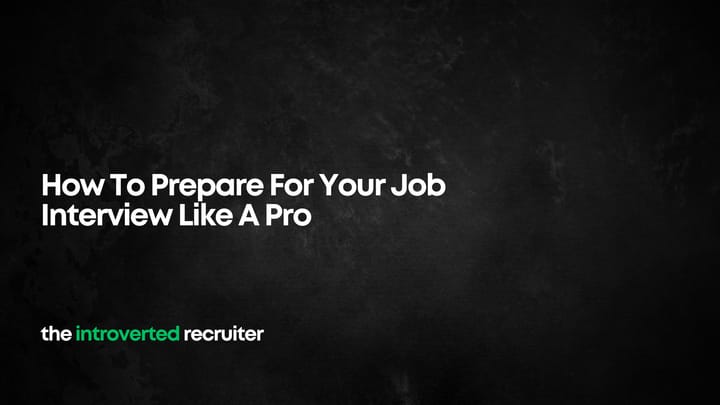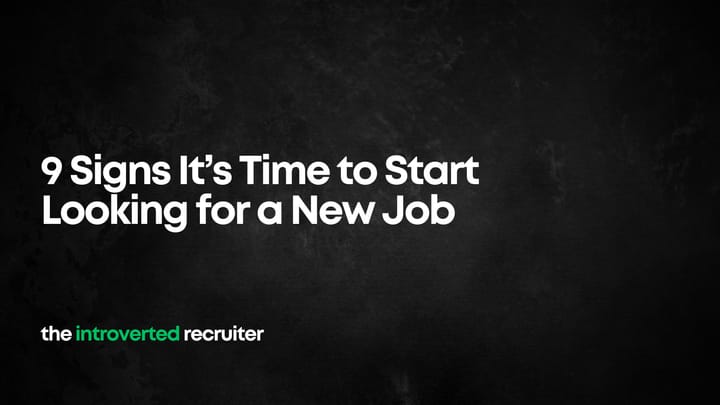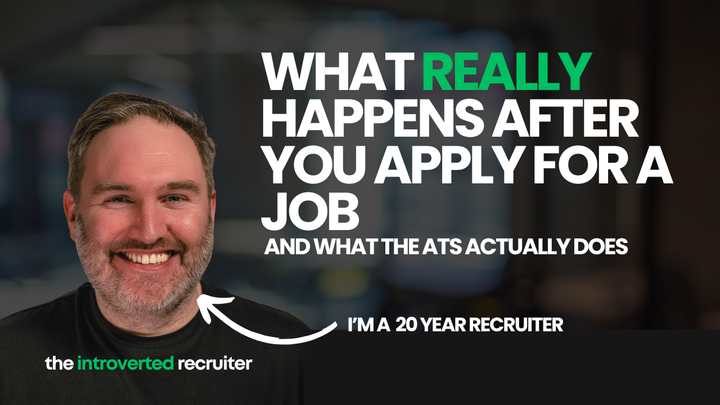Ace Your Next Interview with the STAR Method
Interviewing can be tough. There’s a fine line between showcasing your accomplishments and coming across as overconfident. For introverts, this line can feel razor-thin. If you’ve ever found yourself struggling to explain your skills in a way that’s clear, effective, and still true to your style, there’s a solution—the STAR method.
The STAR method, which stands for Situation, Task, Action, and Result, is a structured way of answering behavioral interview questions that’s designed to make you shine. But the best part? STAR lets you frame your experiences and achievements without feeling like you have to “brag.” In this guide, I’ll walk you through how to make STAR your go-to method, from understanding each part of it to adapting it to any question, with tips specifically for introverts.
Let’s dive in and see how STAR can help you ace your next interview with confidence
1. Why the STAR Method Matters in Interviews
You’ve probably heard the advice to “tell stories” during interviews. But storytelling can feel awkward or even risky if you’re unsure where to start, what details to include, and how to avoid rambling. This is where STAR comes in. STAR gives you a simple framework that breaks your answers down into four parts: Situation, Task, Action, and Result. Each part has a clear purpose, which keeps your answer focused and ensures you’re covering the important points.
How STAR Benefits Introverts
If you’re someone who prefers structured communication and struggles with on-the-spot storytelling, STAR is ideal. It lets you organize your thoughts in a way that feels natural and polished, without feeling like you’re winging it or having to embellish. Introverts often bring a high degree of focus and reflection to the table, and STAR is a perfect method to channel those qualities into your answers.
2. Breaking Down the STAR Method: What Each Step Means
Let’s get into the meat of the STAR method by looking at what each part really means. Once you’ve got these down, you’ll see how STAR gives you a template for any behavioral question interviewers throw your way.
Situation: Setting the Scene (The Context)
The Situation part is where you set the stage for your story. You’ll briefly explain the context behind the challenge, project, or task at hand. This should only take a couple of sentences—you don’t want to dive too deeply into the backstory here. Focus on painting a clear picture, but keep it short.
Example: “At my last job, we faced a backlog in customer service requests, and our average response time was almost twice as long as our competitors’.”
Task: Defining Your Role or Responsibility
Next up is the Task—your role in the story. This should be concise, making it clear what you were responsible for or expected to do. Defining your role helps interviewers understand what part you played in the situation.
Example: “My role was to analyze our response process and identify bottlenecks, then come up with solutions to reduce the response time by at least 30%.”
Action: Explaining the Steps You Took
Now comes the Action step, where you explain what you actually did to address the task. This is where the heart of your story lies. Highlight the steps you took and any strategies you employed to achieve your goal.
Example: “I analyzed the team’s workflow and found that the handoff process between departments was causing delays. I streamlined this by implementing a single point of contact for each department and created automated reminders to speed up follow-ups.”
Result: Sharing the Outcome
Finally, we get to Result, the payoff. This part showcases the outcome of your actions. Whenever possible, quantify your results, as numbers tend to make your accomplishments more tangible.
Example: “As a result, our response time dropped by 40%, and customer satisfaction ratings improved by 20% over the next quarter.”
By breaking your answer into these four steps, STAR allows you to structure a full, clear response that hits all the key points an interviewer is looking for.
3. Common Interview Questions Where STAR Shines
The STAR method is particularly useful for behavioral interview questions, which usually begin with phrases like, “Tell me about a time when…” or “Give an example of…” Here are some common questions that lend themselves well to STAR responses:
- Tell me about a time you had to solve a difficult problem.
- Describe a situation where you took initiative.
- Can you give an example of when you worked well under pressure?
- Have you ever faced a conflict with a coworker? How did you handle it?
- Give an example of a project you completed successfully.
For each of these, the interviewer is looking for a specific story that showcases skills relevant to the role. STAR helps you craft a structured response that provides what they’re looking for without getting bogged down in unnecessary details.
4. How to Build Compelling STAR Responses: Step-by-Step Guide
A strong STAR response starts with choosing the right stories to tell and knowing how to structure them. Here’s a step-by-step guide on how to build your STAR answers.
4.1 Identifying STAR-Worthy Stories
Think about past experiences—work projects, volunteer efforts, or even academic assignments—that highlight qualities the job requires, such as teamwork, leadership, problem-solving, or adaptability. If possible, choose examples where the results had a measurable impact.
4.2 Writing Out Your STAR Responses
Once you’ve chosen your story, write out each part of the STAR response to give yourself a clear outline. For example:
- Situation: Describe the context, keeping it to 1–2 sentences.
- Task: Define your role and goal within that context.
- Action: Detail the steps you took, ideally in 2–3 sentences.
- Result: Share the outcome, quantified if possible.
Writing this out helps you stay clear and focused. Plus, it gives you a written reference you can return to for practice.
4.3 Editing for Brevity
A strong STAR answer is concise, typically around 60–90 seconds in length. If you’ve written out a longer response, trim it down by focusing on the essentials. STAR gives introverts a way to stay on track and avoid unnecessary details.
5. STAR in Action: Examples of Great STAR Responses
Let’s break down some STAR examples, so you can see what a well-constructed answer looks like for different types of questions.
Example 1: Problem-Solving
Question: Tell me about a time you solved a difficult problem.
Response:
- Situation: “Our team’s software update project was falling behind due to multiple bugs found late in development.”
- Task: “As the project manager, my goal was to get us back on track without sacrificing quality.”
- Action: “I scheduled a daily check-in with developers to address bugs in real time, adjusted timelines, and coordinated with QA for additional testing.”
- Result: “By refining our process, we completed the project two weeks early, and bug reports from customers were reduced by 30%.”
Example 2: Leadership
Question: Give an example of when you showed leadership.
Response:
- Situation: “During a busy season, our sales team struggled to meet targets because we lacked a structured lead follow-up process.”
- Task: “I took the initiative to create a system that organized and prioritized leads.”
- Action: “I led weekly team meetings to discuss best practices, provided training on lead prioritization, and implemented a CRM tool to streamline follow-ups.”
- Result: “Within three months, our team’s close rate increased by 25%, and we exceeded our quarterly targets.”
Example 3: Collaboration
Question: Describe a time when you had to work as part of a team.
Response:
- Situation: “At my previous job, I joined a cross-departmental project to launch a new product.”
- Task: “My role was to manage timelines and facilitate communication between marketing, sales, and product development.”
- Action: “I set up regular check-ins and created a shared dashboard to track progress. I also acted as a liaison, resolving any misunderstandings between departments.”
- Result: “The product launched on schedule, and initial sales exceeded projections by 15%.”
Each of these responses follows STAR, allowing you to highlight your skills without feeling like you’re overselling.
6. The Art of Keeping STAR Balanced: Avoiding Oversharing or Underselling
One common pitfall in interviews is spending too much time on certain parts of STAR or not enough on others. Here’s how to keep your answer balanced:
- Focus on Relevance: Only share details that directly impact the story. For instance, when describing the Situation, don’t get too deep into background information.
- Emphasize Actions and Results: These parts of STAR are where you show your impact. Spend more time explaining what you did and the outcome it led to.
The goal is to come across as confident but humble, which is a balance introverts often appreciate. Emphasizing your actions and results keeps the spotlight on the work, not you, which can help you feel more comfortable.
7. Tips for Introverts: STAR Method as a Low-Key Confidence Booster
For introverts, one of the best things about the STAR method is that it provides a “script” of sorts. Rather than feeling pressured to think on your feet and produce a spontaneous answer, STAR gives you a framework to fall back on, letting you share accomplishments without feeling uncomfortable. Here are some ways introverts can leverage STAR to confidently present their skills and experiences.
7.1 Using STAR to Make an Impact with Fewer Words
Introverts often prefer keeping responses concise and to the point. STAR naturally lends itself to brevity while still allowing you to deliver complete answers. Practicing your STAR responses in advance can help you get comfortable with the structure and stay on track, even if you’re asked a question you didn’t anticipate.
7.2 Preparation Techniques: Practicing STAR to Ease Nerves
Preparation is key to making STAR work for you. Write down several STAR stories based on common interview questions (like the ones covered in Section 3), then practice saying them aloud. This practice helps you become comfortable with the format and enables you to pivot more easily if interviewers ask for more details or a different angle. For introverts who find in-the-moment storytelling stressful, rehearsing these stories can make a big difference.
7.3 Leaning on the Action and Result Steps
If you feel uncomfortable focusing on your own accomplishments, put the emphasis on Action and Result. By framing your achievements in terms of what you did (Action) and what happened because of it (Result), you can highlight your impact without feeling like you’re bragging. This approach allows introverts to showcase value in a low-key way that feels authentic.
8. Adapting STAR to Different Types of Interviews
Interviews can vary widely, and the STAR method can be adapted to suit different formats and contexts. Whether it’s a one-on-one conversation or a panel interview, STAR’s structured approach helps you keep your responses clear and impactful.
8.1 Panel Interviews: Structuring Responses for Multiple Interviewers
Panel interviews can feel particularly intimidating, especially if you’re more introverted. Here’s how STAR can help you stay organized and focused:
- Direct Your Response to One Person: While maintaining eye contact with the whole panel, try focusing your response initially on the person who asked the question.
- Use STAR as a Mental Checklist: Take a deep breath and mentally go through each STAR step as you answer. This helps prevent you from getting flustered or forgetting key details.
- Keep the Result Clear: Because you’re speaking to multiple people, wrap up with a concise Result that reinforces the impact of your work.
8.2 Phone or Video Interviews: Staying Concise and On-Point
Phone and video interviews can be tricky because non-verbal cues are limited. Here’s how to use STAR to make your answers clear:
- Speak Slowly and Deliberately: It’s easy to rush when you can’t see the interviewer’s reactions. Take your time, especially with the Action and Result steps, to make sure they understand your accomplishments.
- Use Pauses: Brief pauses between each part of STAR (especially between Action and Result) can help interviewers digest your answer and give you a moment to collect your thoughts.
- Have Notes Handy: In a phone or video setting, you can keep a few STAR notes nearby as prompts. Use these to remind yourself of key points and to stay on track.
8.3 Case or Project Interviews: Highlighting Past Project Work
For technical or project-based roles, interviewers might ask you to explain past projects or tackle a case study. STAR is a great tool for guiding your response:
- Situation and Task: Use these to outline the project’s objectives and your role.
- Action: Focus on specific actions you took that demonstrate technical or project management skills.
- Result: Highlight project outcomes, timelines met, or quantitative achievements, like increased efficiency or reduced costs.
STAR keeps your answers clear, even in cases where complex details need to be covered.
9. Final STAR Tips and Common Mistakes to Avoid
Mastering STAR takes practice, and it’s normal to hit a few snags along the way. Here are some common mistakes to avoid, along with final tips to make your STAR responses shine.
9.1 Dos and Don’ts for Impactful STAR Answers
DO:
- Focus on achievements that are relevant to the role.
- Keep your answers structured but conversational.
- Use specific examples and quantifiable results.
DON’T:
- Skip over the Result. This is where you show your impact.
- Spend too much time on the Situation or Task—keep them brief.
- Use vague language in your Action or Result; be as clear as possible.
9.2 Common Pitfalls: Avoiding Traps like Vague Results or Rambling
- Vague Results: Always include concrete outcomes in the Result section. Saying, “It was a success” is less impactful than saying, “Customer satisfaction improved by 20%.”
- Rambling on the Situation: It’s easy to get lost in the background details of the story, but try to keep the Situation and Task concise. STAR is about highlighting the action and outcome, so avoid getting bogged down in context.
9.3 STAR Practice Drills: Exercises for Mastering the Method
To get comfortable with STAR, try these quick drills:
- Drill 1: Write down three STAR stories for common questions, and time yourself delivering each one in 60–90 seconds.
- Drill 2: Practice answering with only three sentences: one for the Situation/Task, one for the Action, and one for the Result. This teaches you to keep it brief.
- Drill 3: Record yourself answering a STAR question and play it back to evaluate clarity, conciseness, and pacing.
With practice, STAR will feel like second nature, and you’ll find it much easier to stay composed under pressure.
10. Conclusion: Embracing the STAR Method as an Introvert-Friendly Interview Tool
In a world that often values bold self-promotion, introverts can feel overlooked. But the STAR method offers an answer. It lets you showcase your strengths, stay structured, and communicate your value in a balanced, effective way. With STAR, you don’t have to “sell yourself” in an uncomfortable way. Instead, you’re sharing stories of what you’ve achieved, making it clear how you can make an impact.
By practicing and perfecting your STAR stories, you’re equipping yourself with a powerful tool to ace interviews, stay grounded, and approach each question with confidence. Remember, you’ve already done the hard work in these real-life situations—now STAR just helps you communicate it clearly and effectively. So, take a deep breath, embrace the STAR method, and let your experience speak for itself.
Need feedback on your CV?
I built an AI CV Reviewer trained with my 20 years of experience as a recruiter.
It gives you instant, structured feedback so you can see exactly what to improve.
No fluff, no gimmicks—just clear, actionable guidance.
Use it as many times as you like. Lifetime access
Check it out here
Want More Interviews & Faster Job Offers?
If job hunting is starting to feel like an endless cycle of applications and ghosting, let’s fix that.
I’ve put together some no-nonsense job search tools designed to help you land interviews faster—because you don’t need more stress, you need results.
✅ Free CV Template – A CV Template that will actually help you get job interviews.
✅ CV Review Tool - Get real time feedback on your CV using my AI CV Reviewer.
✅ The No-Nonsense Job Search System – A step-by-step course to help you cut through the noise and get hired faster.
Your next job is closer than you think—let’s make it happen.
Follow Me
Find me on LinkedIn , TikTok , YouTube or Instagram where I share lot’s of practical no nonsense advice.



